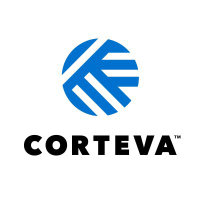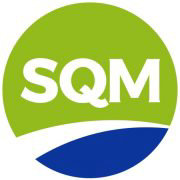
PI Industries Ltd
NSE:PIIND

Profitability Summary
PI Industries Ltd's profitability score is 65/100. We take all the information about a company's profitability (such as its margins, capital efficiency, free cash flow generating ability, and more) and consolidate it into one single number - the profitability score. The higher the profitability score, the more profitable the company is.

Score
We take all the information about a company's profitability (such as its margins, capital efficiency, free cash flow generating ability, and more) and consolidate it into one single number - the profitability score. The higher the profitability score, the more profitable the company is.
We take all the information about a company's profitability (such as its margins, capital efficiency, free cash flow generating ability, and more) and consolidate it into one single number - the profitability score. The higher the profitability score, the more profitable the company is.

Score

Score
Margins
Profit margins represent what percentage of sales has turned into profits. Simply put, the percentage figure indicates how many cents of profit the company has generated for each dollar of sale.
Profit margins help investors assess if a company's management is generating enough profit from its sales and whether operating costs and overhead costs are being contained.
Earnings Waterfall
PI Industries Ltd

|
Revenue
|
79.8B
INR
|
|
Cost of Revenue
|
-37.7B
INR
|
|
Gross Profit
|
42.1B
INR
|
|
Operating Expenses
|
-23.8B
INR
|
|
Operating Income
|
18.3B
INR
|
|
Other Expenses
|
-1.7B
INR
|
|
Net Income
|
16.6B
INR
|
Margins Comparison
PI Industries Ltd Competitors

| Country | Company | Market Cap |
Gross Margin |
Operating Margin |
Net Margin |
||
|---|---|---|---|---|---|---|---|
| IN |

|
PI Industries Ltd
NSE:PIIND
|
627.9B INR |
53%
|
23%
|
21%
|
|
| US |

|
Corteva Inc
NYSE:CTVA
|
50.6B USD |
45%
|
13%
|
7%
|
|
| CA |

|
Nutrien Ltd
TSX:NTR
|
41.7B CAD |
28%
|
11%
|
2%
|
|
| US |

|
CF Industries Holdings Inc
NYSE:CF
|
16.5B USD |
36%
|
31%
|
22%
|
|
| SA |

|
SABIC Agri-Nutrients Company SJSC
SAU:2020
|
53.8B SAR |
37%
|
27%
|
30%
|
|
| CN |

|
Qinghai Salt Lake Industry Co Ltd
SZSE:000792
|
89.5B CNY |
44%
|
37%
|
31%
|
|
| US |

|
Mosaic Co
NYSE:MOS
|
11.6B USD |
14%
|
7%
|
3%
|
|
| RU |

|
PhosAgro PAO
MOEX:PHOR
|
817.9B RUB |
42%
|
29%
|
21%
|
|
| NO |

|
Yara International ASA
OSE:YAR
|
101B NOK |
27%
|
8%
|
2%
|
|
| CL |

|
Sociedad Quimica y Minera de Chile SA
NYSE:SQM
|
9.5B USD |
28%
|
22%
|
13%
|
|
| CN |

|
Zangge Mining Co Ltd
SZSE:000408
|
65B CNY |
34%
|
24%
|
88%
|
Return on Capital
Return on capital ratios give a sense of how well a company is using its capital (equity, assets, capital employed, etc.) to generate profits (operating income, net income, etc.). In simple words, these ratios show how much income is generated for each dollar of capital invested.




Return on Capital Comparison
PI Industries Ltd Competitors

| Country | Company | Market Cap | ROE | ROA | ROCE | ROIC | ||
|---|---|---|---|---|---|---|---|---|
| IN |

|
PI Industries Ltd
NSE:PIIND
|
627.9B INR |
18%
|
14%
|
19%
|
22%
|
|
| US |

|
Corteva Inc
NYSE:CTVA
|
50.6B USD |
5%
|
3%
|
7%
|
4%
|
|
| CA |

|
Nutrien Ltd
TSX:NTR
|
41.7B CAD |
2%
|
1%
|
7%
|
4%
|
|
| US |

|
CF Industries Holdings Inc
NYSE:CF
|
16.5B USD |
26%
|
10%
|
15%
|
14%
|
|
| SA |

|
SABIC Agri-Nutrients Company SJSC
SAU:2020
|
53.8B SAR |
18%
|
14%
|
14%
|
22%
|
|
| CN |

|
Qinghai Salt Lake Industry Co Ltd
SZSE:000792
|
89.5B CNY |
14%
|
11%
|
14%
|
20%
|
|
| US |

|
Mosaic Co
NYSE:MOS
|
11.6B USD |
3%
|
2%
|
4%
|
2%
|
|
| RU |

|
PhosAgro PAO
MOEX:PHOR
|
817.9B RUB |
68%
|
20%
|
48%
|
24%
|
|
| NO |

|
Yara International ASA
OSE:YAR
|
101B NOK |
4%
|
2%
|
9%
|
5%
|
|
| CL |

|
Sociedad Quimica y Minera de Chile SA
NYSE:SQM
|
9.5B USD |
12%
|
5%
|
11%
|
7%
|
|
| CN |

|
Zangge Mining Co Ltd
SZSE:000408
|
65B CNY |
20%
|
19%
|
5%
|
6%
|
Free Cash Flow
Free cash flow (FCF) is the money a company has left over after paying its operating expenses and capital expenditures. The more free cash flow a company has, the more it can allocate to dividends, paying down debt, and growth opportunities.
If a company has a decreasing free cash flow, that is not necessarily bad if the company is investing in its growth.


















































 You don't have any saved screeners yet
You don't have any saved screeners yet
